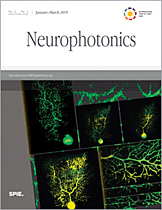 |
Date Announced: 15 Apr 2015
Pioneering work in Larry Cohen’s lab influenced numerous researchers, paving the way for advances in functional imaging of the electrical activity of live tissue in real time.
BELLINGHAM, Washington, USA – The latest issue of the journal Neurophotonics features a tribute to the brilliance and originality of Lawrence (Larry) Cohen as well as reports on the latest advances in voltage-sensitive dyes and multiple-site optical recording methods enabled by the work of Cohen and his team. Their research has paved the way for advances in functional imaging of the electrical activity of live tissue in real time, say journal editors.
Neurophotonics is published by SPIE, the international society for optics and photonics. All articles in the journal are open access on the SPIE Digital Library through the end of 2015.
Advances in functional imaging of the nervous system and other physiological systems ―barely conceivable without optical mapping using potentiometric probes and, more recently, genetically encoded voltage-sensitive proteins pioneered by Prof. Cohen and his colleagues ― are only beginning, noted guest editors Brian Salzberg (University of Pennsylvania) and Dejan Zecevic (Yale University School of Medicine) in their editorial in the special section.
Indeed, the guest editors said, the era in which optical methods, especially fluorescence, but also absorbance, birefringence, and light scattering, are applied to an extremely large range of biological preparations, could not have occurred without Larry Cohen’s pioneering and extremely fruitful work.
Beginning in the late 1960s, Cohen “devoted himself to two key problems: finding the dyes that would best light up during activity and developing the best methods for recording optical signals,” wrote John Nicholls (International School for Advanced Studies, Italy) in the journal. “He moved up from single axons, to groups of nerve cells in invertebrates, and then to an important biological problem: the organization of olfactory processing that gives rise to the sense of smell. This progression took many years but Larry never swerved from his aim: to observe how tens, or hundreds, or thousands of nerve cells process information in real time.”
Kohtaro Kamino (Tokyo Medical and Dental University) worked in Cohen’s laboratory at Yale University and witnessed the birth of this frontier field. In the 1970s, when large photodiode arrays were not yet available, Cohen, together with Salzberg and then Grinvald, used individual light guide modules to introduce multiple-site optical recording methods into neurobiology.
With colleagues including Kamino, Cohen began using 5x5-element photodiode arrays, and by the early 1990s had built systems incorporating 464-element arrays. Kamino’s article in the special section details how this early work influenced his research centering on capturing development of cardiac and neural systems in early-stage chick and rat embryos.
E-mail: amy@spie.org
Web Site: spie.org
| © 2025 SPIE Europe |
|